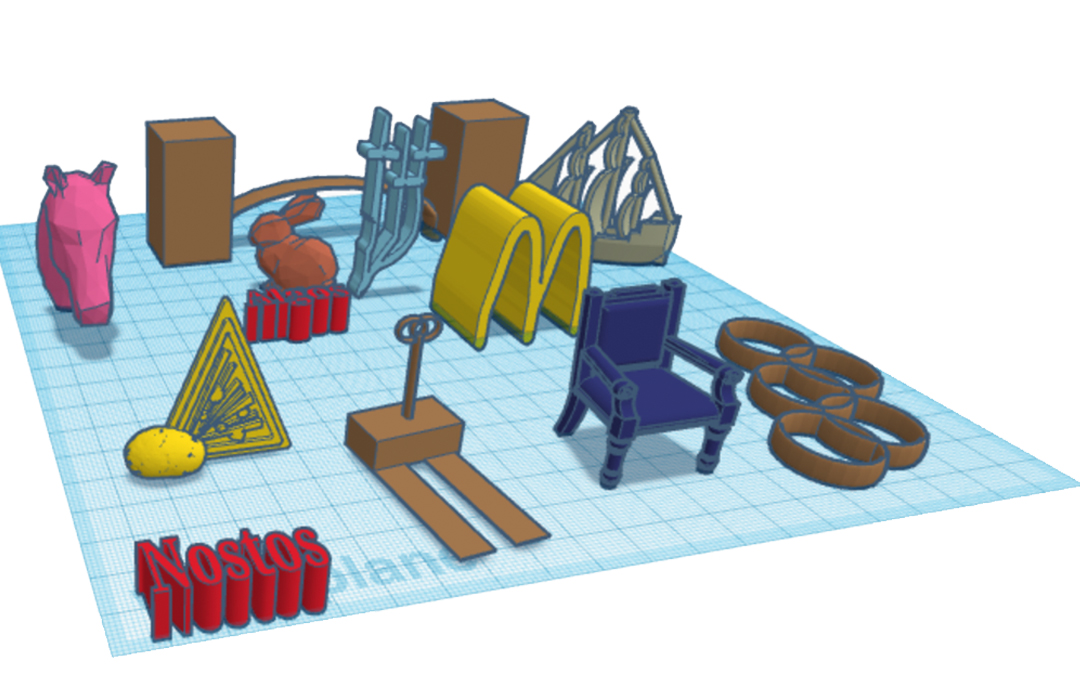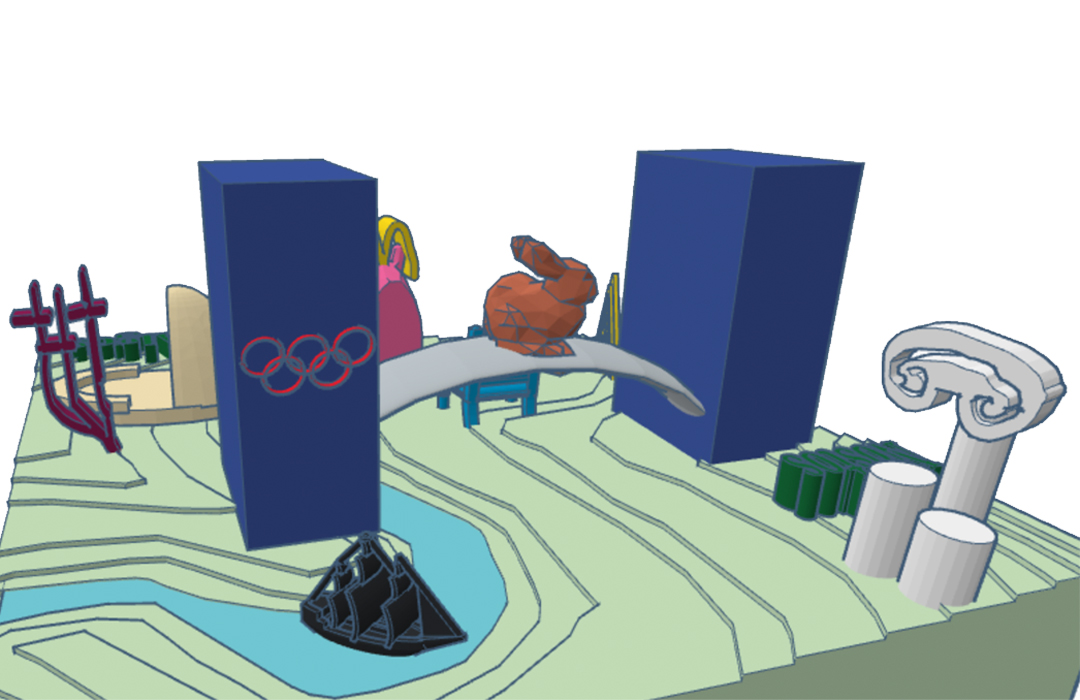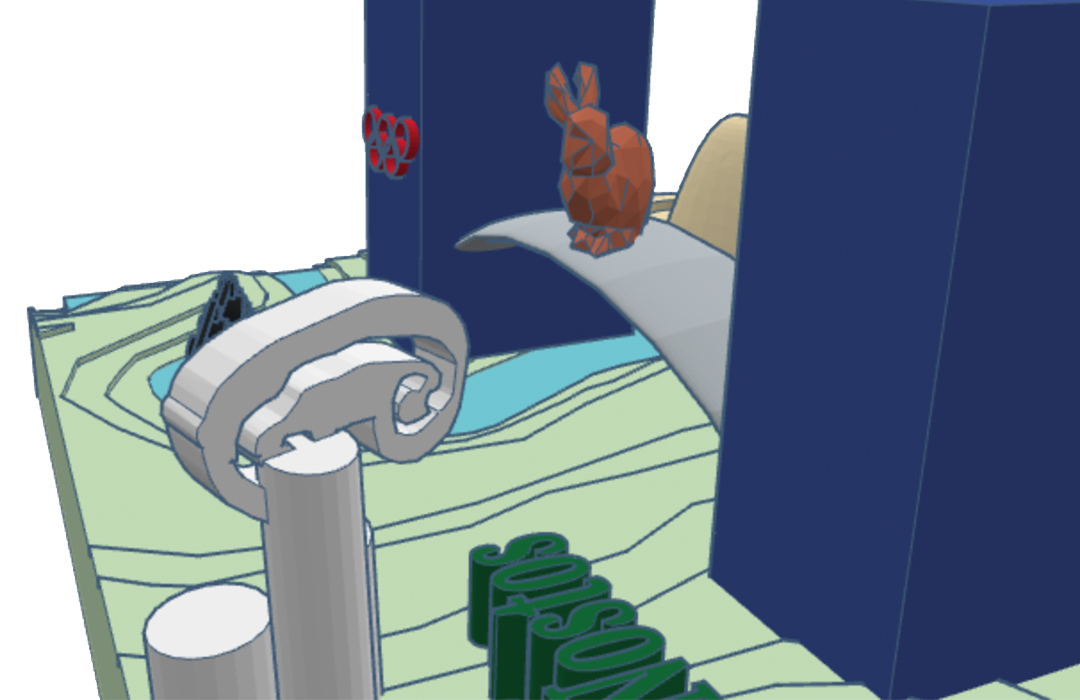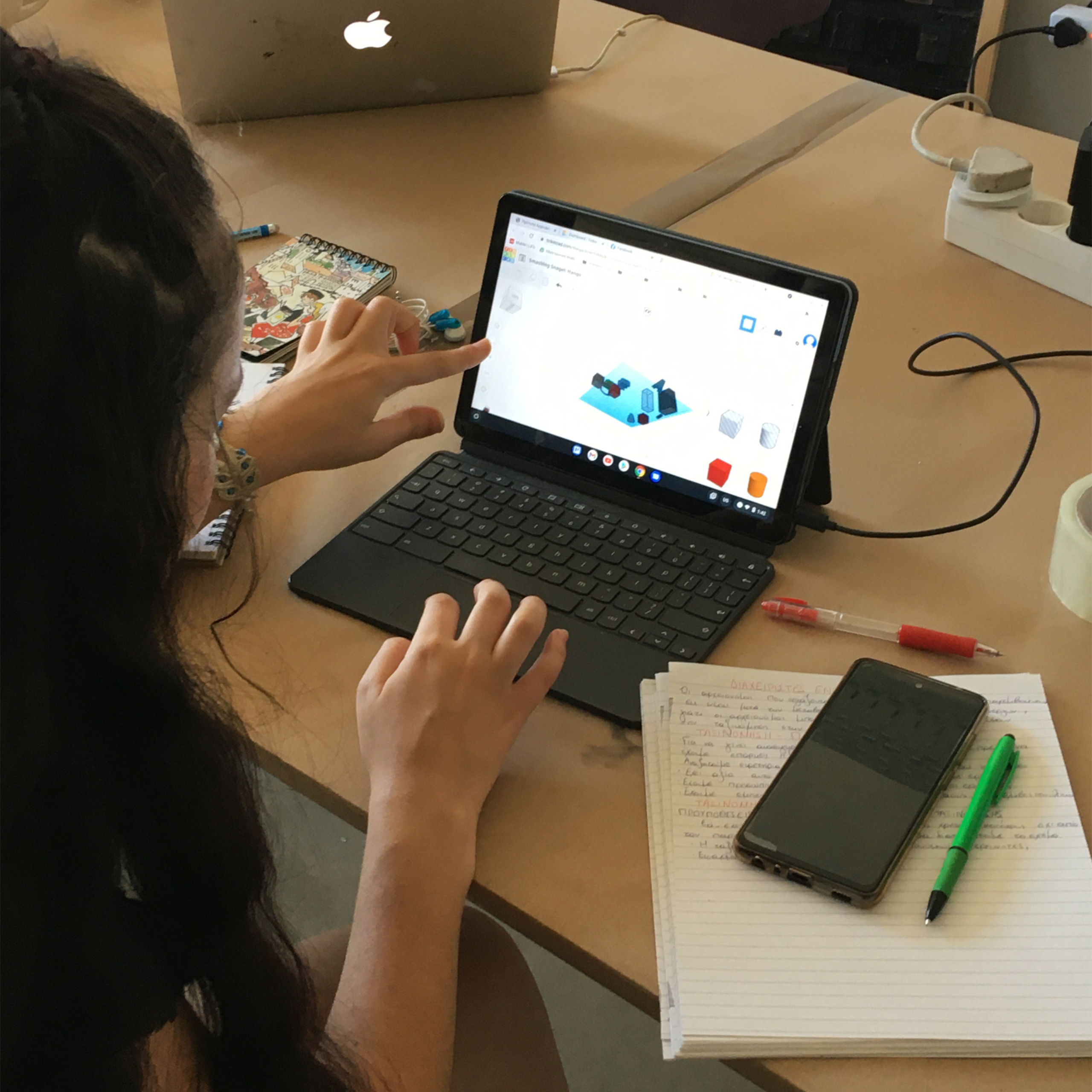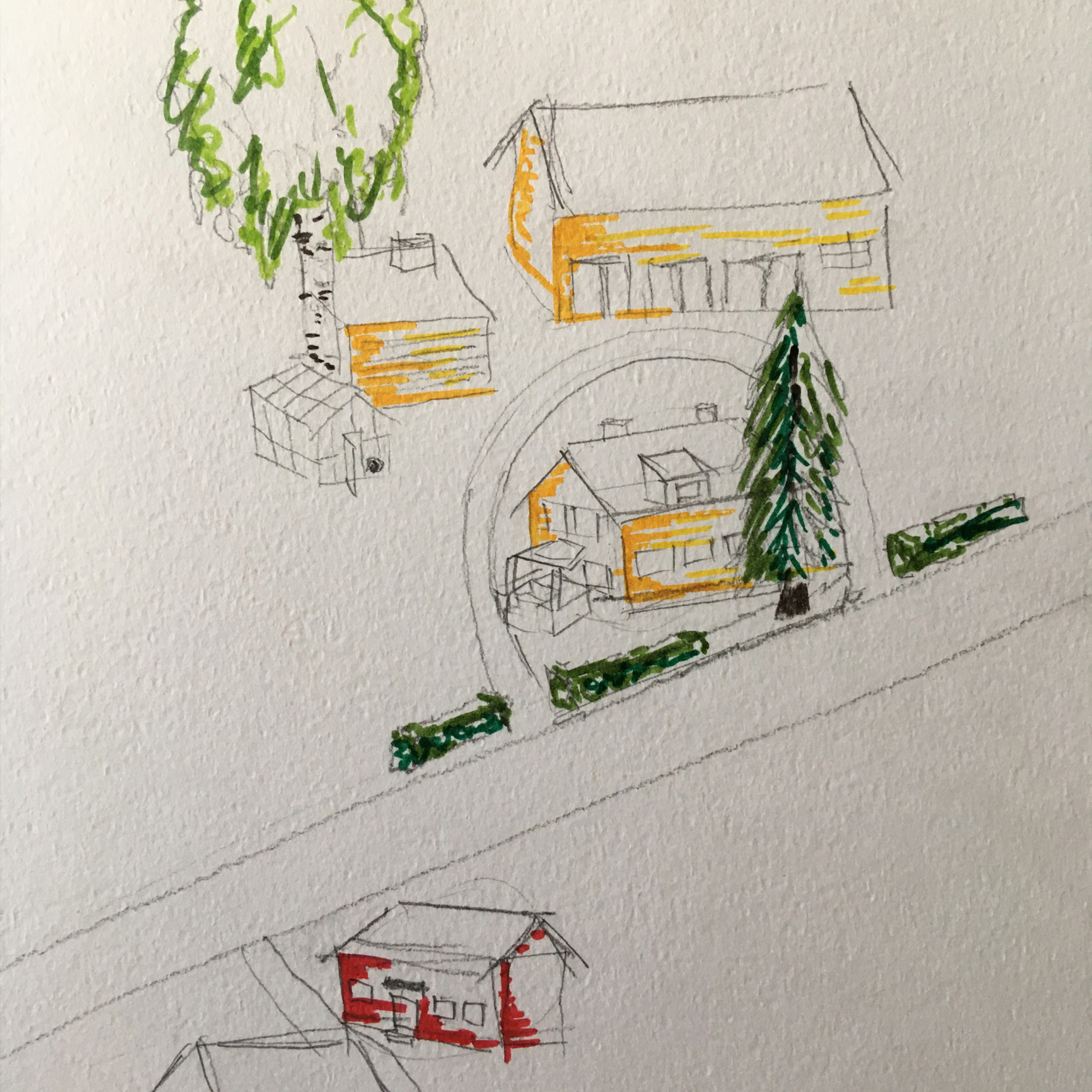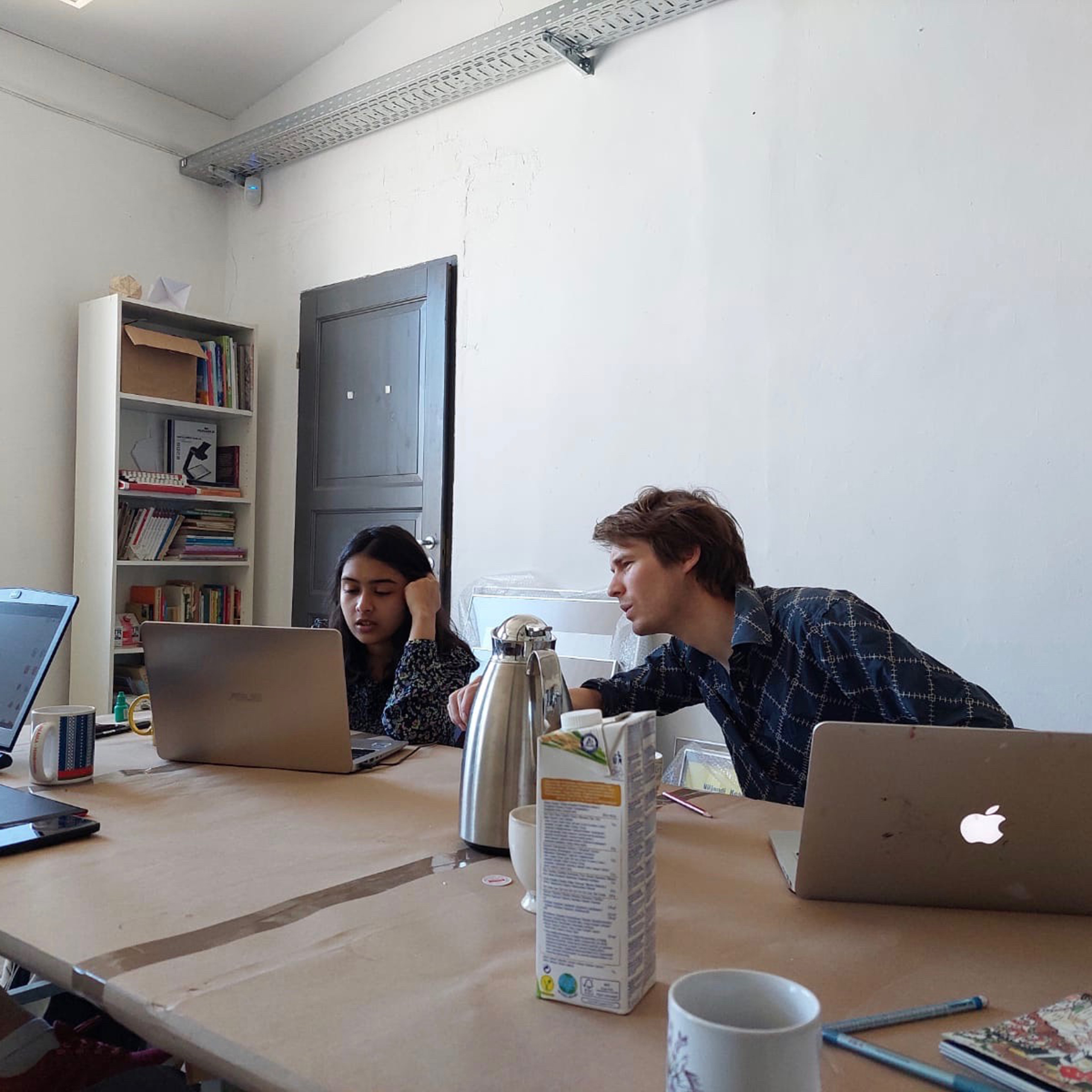CRYPTOCARTOGRAPHY – Thursday, 15 July 2021
On Thursday, 15 July 2021, we present Cryptocartography, the immersive, three-dimensional virtual environment we designed as part of our residency with Lateral Geographies.
The environment comprises maps and 3d models the workshop participants created on 26 June and 3 July.
To visit Cryptocartography click on the link below.
THE SECOND WORKSHOP – Saturday, 3 July 2021
During the second workshop, we selected meaningful, humorous or central elements from every participant’s map that had been drawn during the first workshop.
We created 3D models from these elements, which we then imported into Tinkercad. We subsequently assembled these seemingly disparate elements into a shared environment that bears the mark of each participant, and builds on teamwork.
You will recognise the crosses, boat and chair from Myrsini’s map (although the chair also features in Evan’s drawing, together with the McDonald’s symbol), the Olympic rings and open-air stage from Pauline’s map, the bridge from Juhi’s, the horse’s head which was taken from Charlie’s drawing and the nostos and algos words from Viki’s map.
These objects may look odd to those who don’t know the context in which they were conceived, but through conversations and environment-building, they started to tell us a story.
We also received some nice messages from the group.
Pauline: “Thank you Viki and Charlie, it was a great and super fun workshop. Thank you everyone for sharing their stories! It was a nice and unique opportunity to get to know someone in a way you probably wouldn’t otherwise and it also helped us to find the most random connections between people. Keep up the excellent work!”
Juhi: “It was a great experience! Thank you guys so much for coming up with this and asking us to participate. Looking forward to the developments!”
Myrsini: “Thank you 😊keep up your lovely work 😍and keep sharing your explosive potato-ideas with the world!”
THE FIRST WORKSHOP – Saturday, 26 June 2021
On Saturday, 26 June, we held our first workshop.
The participants comprised of six people from different backgrounds and countries – Pauline, Juhi, Myrsini, Evan, Charlie and Viki. Five are currently based at the Typa Museum in Tartu, Estonia, and were attending the workshop in person – in compliance with safety regulations – while Viki was participating remotely in the session.
Typa is a print and paper museum that houses many soviet printing presses and typescript sets that were salvaged from the Soviet occupation of Estonia.
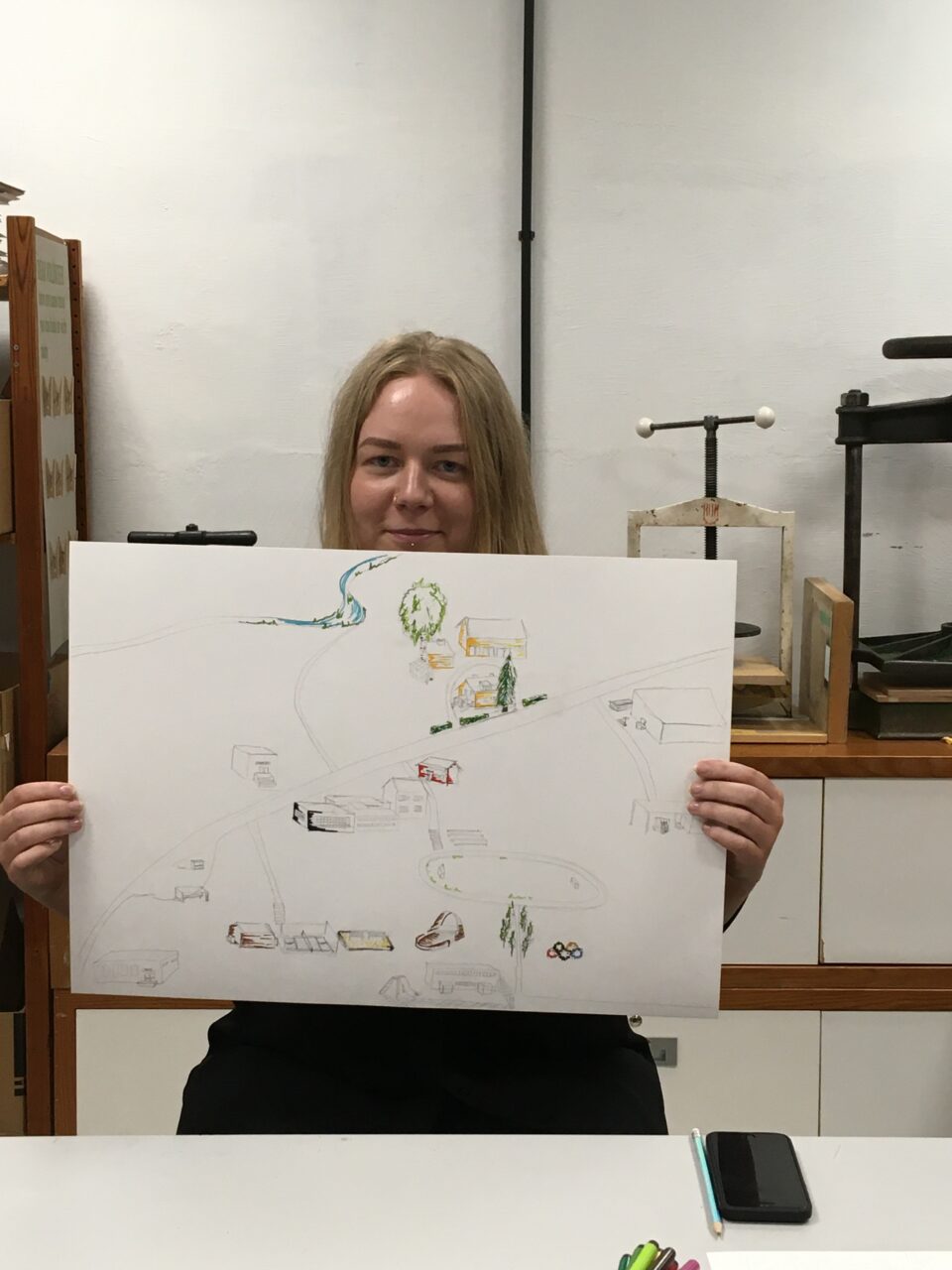
Pauline is from Estonia and works at Typa; she runs workshops on bookbinding and notebook making.
Pauline: “I drew a map of my home town and coloured in the things whose colour I remember (should have coloured the water brown, it definitely wasn’t blue 😅). I drew places whose memories are etched in my mind.”
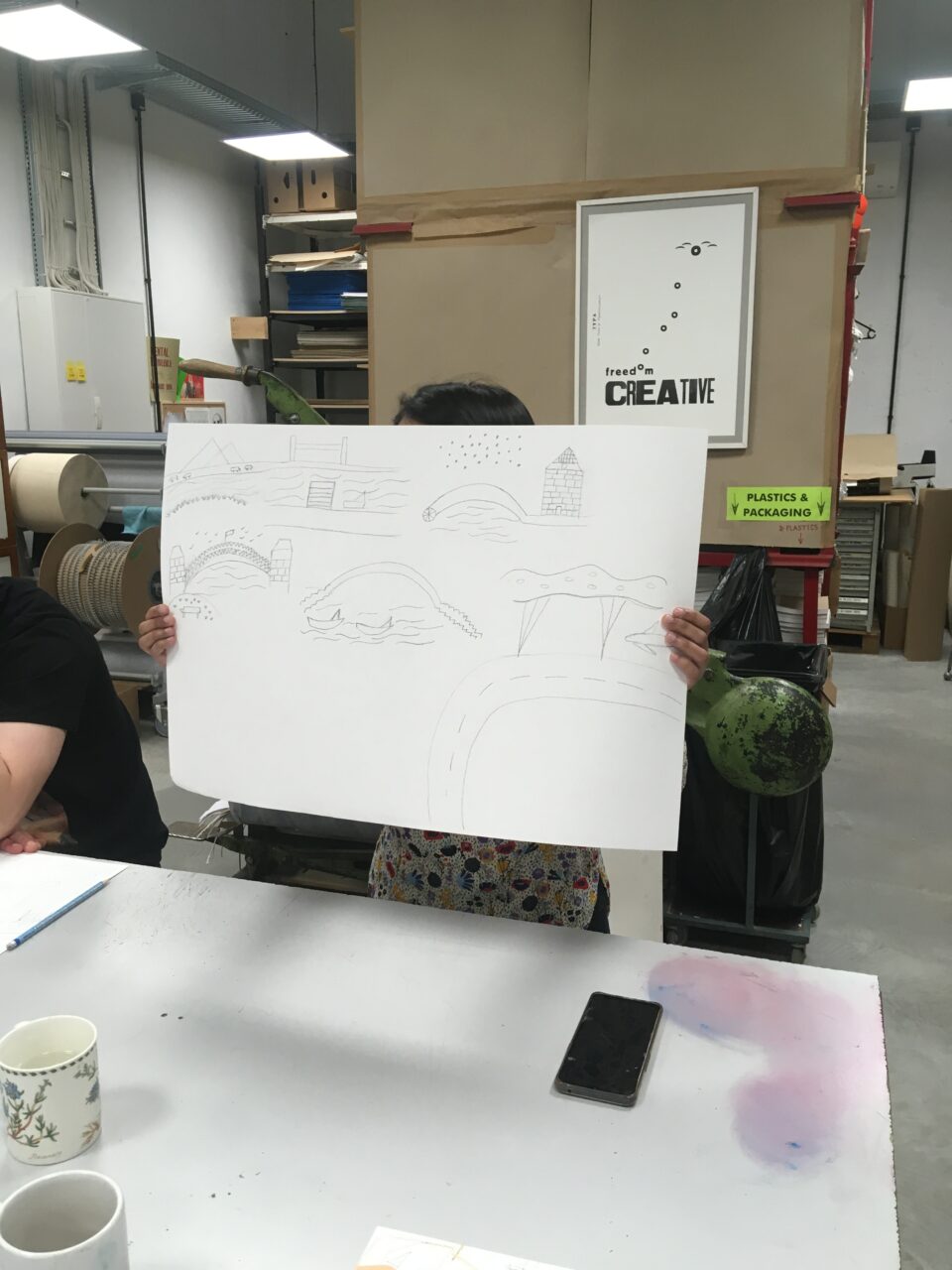
Juhi is from India; she is studying heritage and is particularly interested in ideas around invisible heritage.
Juhi: “My map represents certain spots that have helped ground myself in a completely new city. They all include a bridge and water body because I grew up in Mumbai which is right by the sea so these spaces remind me of home.”
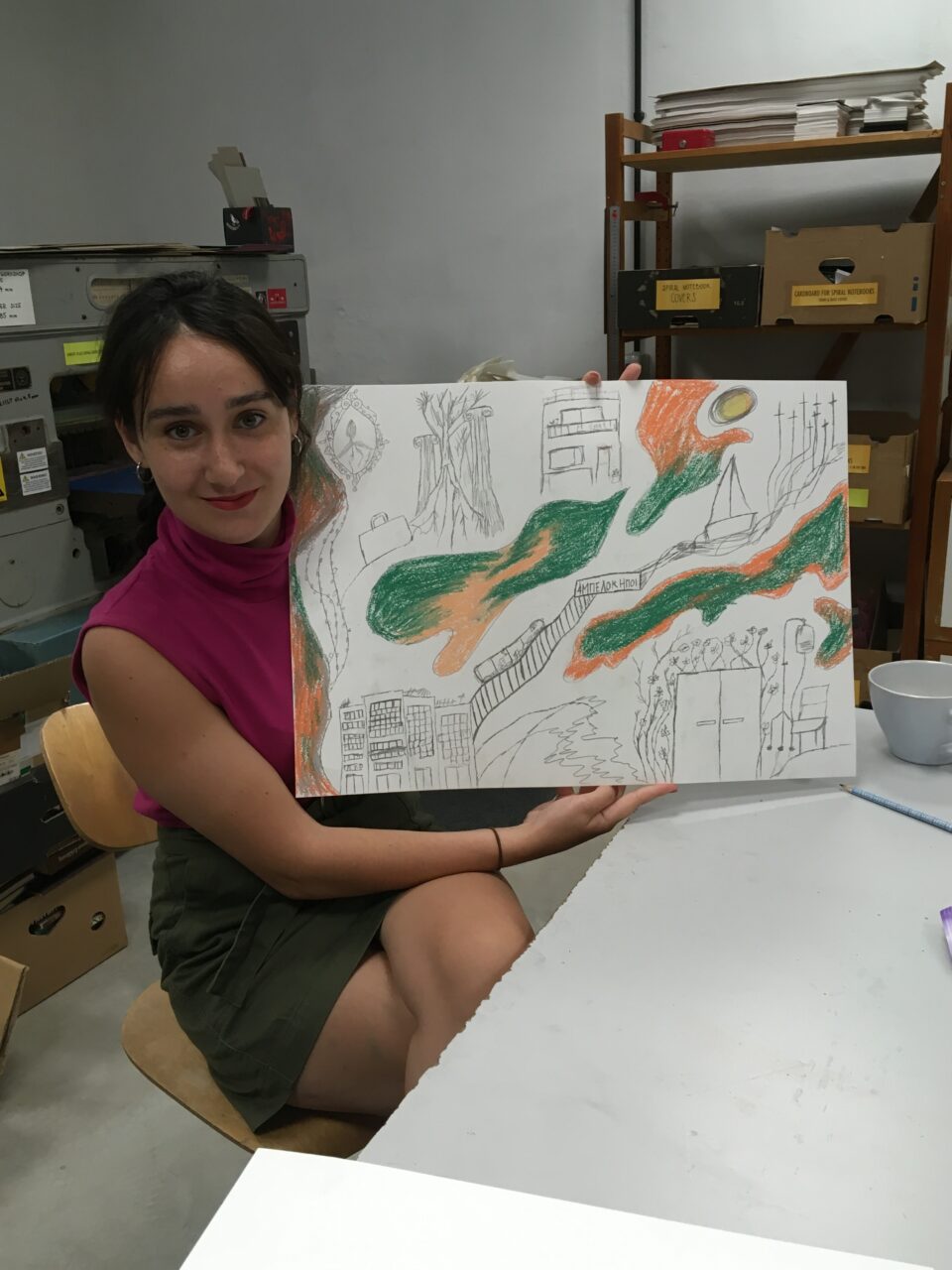
Myrsini is from Greece; she is also studying for her thesis.
Myrsini: “My map draws from my experience and my mother’s as we headed to the hospital last summer. The drawing incorporates elements and memories of the places I would pass by during our trips to the hospital over the course of several months. I also tried to represent my mother’s metaphorical journey into the afterlife. The sketch includes a representation of places in Athens, of my house and of areas near the sea.”
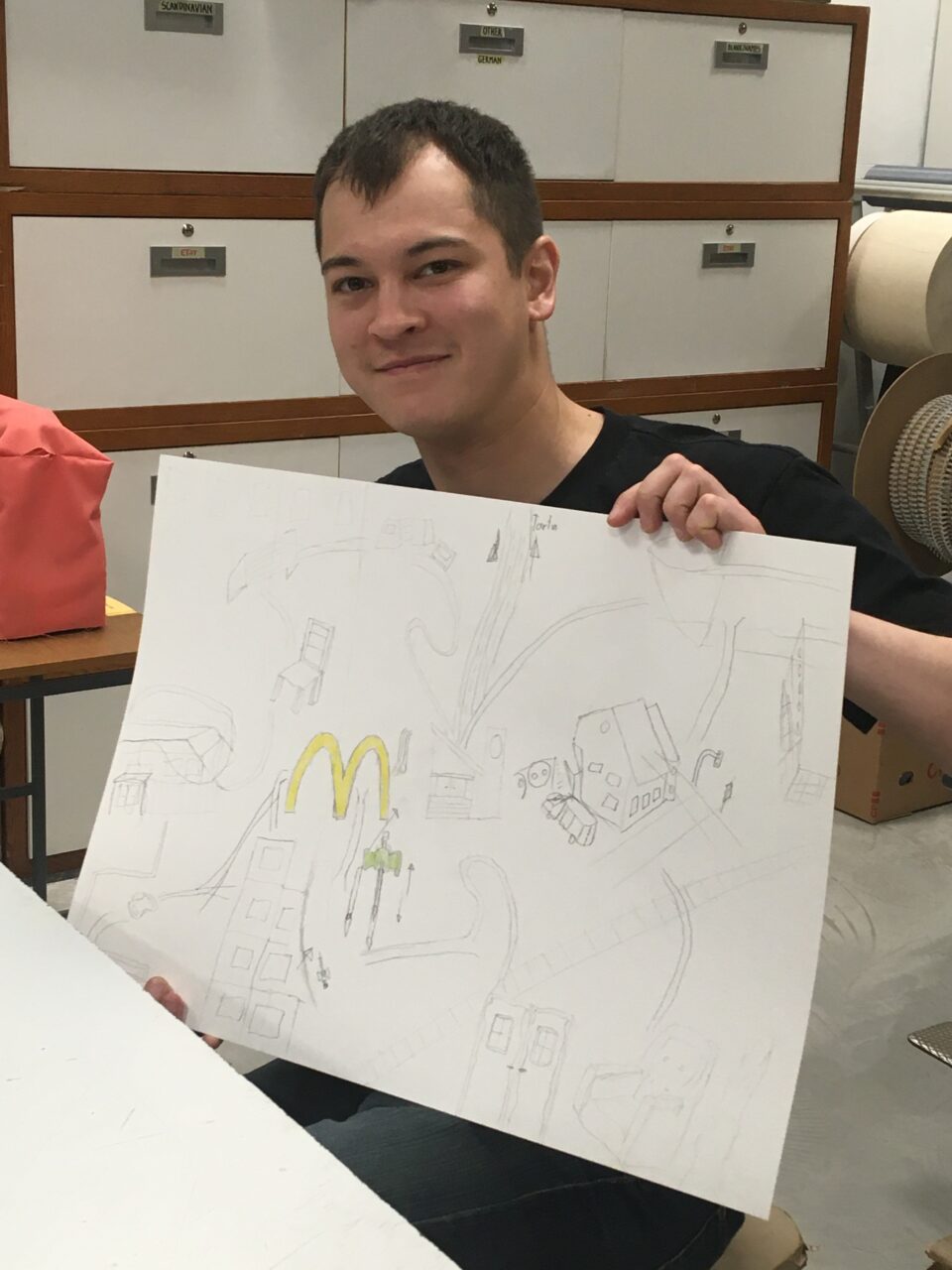
Evan is from Australia and came to Estonia to train to be a paramedic at the army training base near the museum; he is also an artist.
Evan: “My map is of my first 24hrs working for the paramedic service in Estonia.”
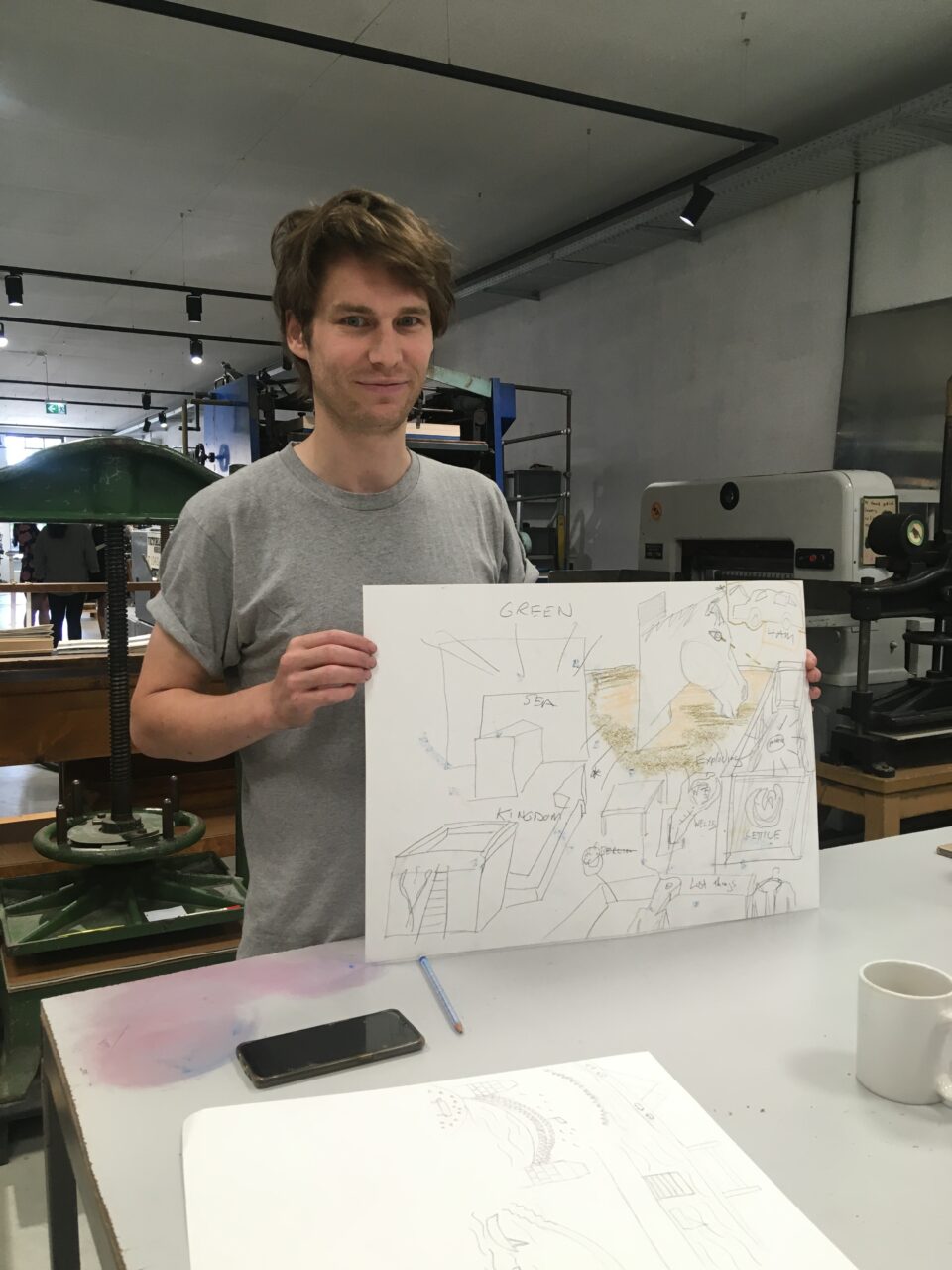
Charlie is from England; he is the director of Wells Projects.
Charlie: “My map is a loosely linked map of places that I keep coming back to – Cornwall; my parent’s house; the artist-led space I helped run. There are little memories and jokes I remembered while drawing like the exploding potatoes. I also remembered a playspace I had as a kid above our garage I had totally forgotten about… which is nice.”
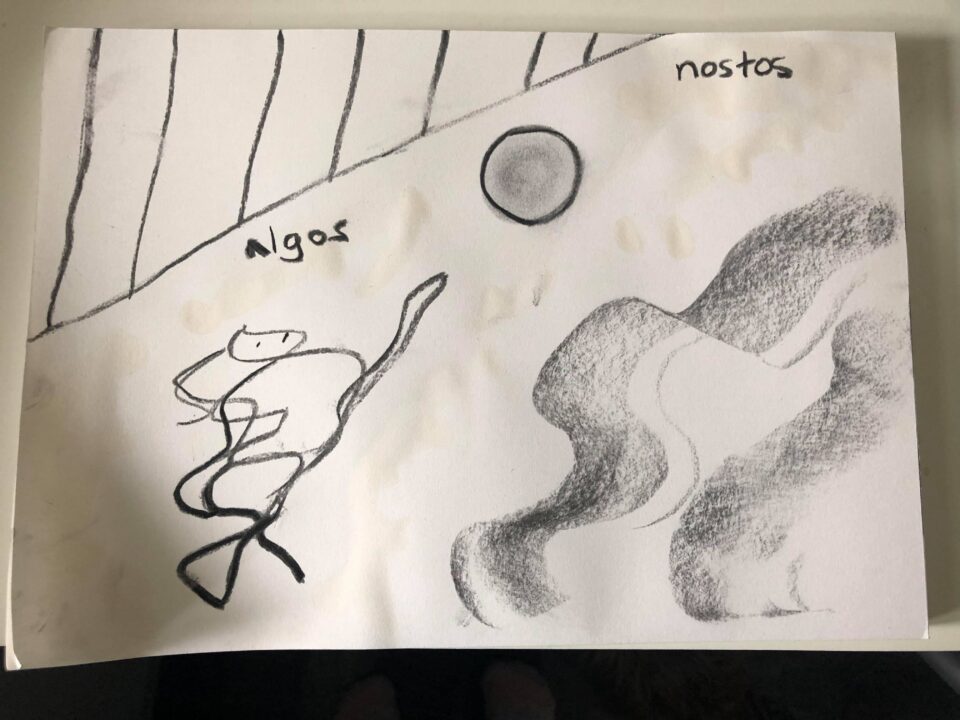
Viki is from Hungary; she is the Wells Projects Outreach Manager.
Viki: “I have been unable to travel to meet family, or to be by the sea, which is my safe place. Due to a repeatedly cancelled trip home, I have been feeling upset and also guilty, as I know many people have lost a lot more. This is an abstract drawing of me by the sea, chasing something (a beach ball perhaps?), with a fence delimiting the area. I have also recently discovered that the word nostalgia comes from the ancient Greek words, nostos (return home) and algos (pain): the word nostalgia has now taken on a whole new meaning, as I am confined to my home, and in emotional pain.”
Charlotte, the director of Typa may also send us a map, but unfortunately was unable to participate in the workshop.
ABOUT CRYPTOCARTOGRAPHY
The aim of Cryptocartography is to map the imaginary areas that the workshop participants occupy, inviting them to draw maps of a location from their past, where they once were, where they are at present or where they want to be.
During lockdown we experienced loss of space: as the places we inhabit in our daily lives significantly narrowed down, we occupied ourselves with spaces – internal or external – of memory and longing. In this iteration, the mental-health focus remained, but we had the chance to work together in person. The maps that were produced incorporate a number of different methods, viewpoints and techniques. Some maps are of imagined spaces, whereas some illustrate real geographies.
The challenge is to design a format where the information could be presented together. We will use 3D design software to produce a 3D model extrapolated from the maps. We will create this model collaboratively with participants, building an interactive digital object from traditional drawings of personal psychogeographies.
Using this method will allow the participants of the workshop to be as expressive, as detailed, as fanciful or as truthful as they want to be with their drawings, and collaborate across diverse physical and mental spaces.

